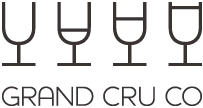- Details
- Written by Henry Conway
- Category: News
- Hits: 1880
Chianti Classico looks forward to Chinese year of the rooster
Tuscany’s Chianti Classico wines are known for their black rooster emblem that appears on the bottle neck, and the symbol is used widely by the regional wine council for marketing.
Chinese new year 2017 heralds an opportunity for Chianti Classico in China, as the lunar calendar moves into the year of the rooster from the monkey. ‘We know that 2017 is the year of the rooster in China and we will certainly try to take advantage of it,’ said Silvia Fiorentini, head of marketing for the Chianti Classico Consorzio.
The Consorzio is planning education seminars in China this year. ‘We know that “education” in this market is very important and the black rooster logo is really very helpful for us to help consumers identify our products,’ Fiorentini said
The rooster emblem has been associated with the Chianti area for around 700 hundred years, dating to a fabled horse race between two rival knights, one from Florence and one from Siena, according to the Consorzio.
Italian wines saw strong growth in shipments to China in 2016. Exports rose by 39% in value to US$114 million and by 14% in volume versus 2015, according to the latest Chinese customs figures released this week.
China is still a ‘secondary’ market for Chianti Classico at present, but Fiorentini said that she expects this will change. ‘We have good growth prospects for the future and for this reason we will keep on investing [there].’
Italian winemakers have been boosted by online retail giant Alibaba pushing their wines harder in 2016. Alibaba’s billionaire founder may own châteaux in France’s Bordeaux, but he chose the Vinitaly 2016 show to announce his commitment to growing wine sales.
Other winemakers and estates have previously sought to take advantage of the Chinese zodiac, such as Mouton Rothschild during the year of the ram – or sheep or goat – in 2015 and Cheval Blanc in the year of the horse in 2014.
Italy applies for Prosecco UNESCO status
Italy’s National Commission for UNESCO publicly backed the application for the area of Conegliano and Valdobbiadene – the home of Prosecco DOCG wines – to join the world heritage list.
‘It is a recognition that we receive with pride,’ said Innocente Nardi, president of the Consortium of Conegliano Valdobbiadene Prosecco Superiore DOCG.
‘This application adds new value to the beauty of this territory, which for centuries has expressed its potential in many fields; viticulture, first of all, but also wine innovation, art and architecture.’
The Prosecco UNESCO bid has been nearly 10 years in the making; the campaign to nominate Prosecco began in 2008, and in 2010 it was included in the Italian Tentative List.
To qualify for world heritage status, a site must qualify for one of 10 set criteria, and be of ‘outstanding universal value’, according to UNESCO.
Once nominated, advisory bodies evaluate the site in question, and a World Heritage Committee makes the final decision on who makes the list. Other Italian UNESCO wine regions include Barolo and Pantelleria, off the coast of southern Italy. With 51 UNESCO sites, Italy has more than any other country, and seven are in Tuscany alone.
Champagne was awarded UNESCO status in 2015, along with Burgundy. Plans for submitting the 1855 Bordeaux classification to UNESCO were abandoned last year.
Fake DRC wine: Prosecutor demands prison for alleged gang member
One of the alleged ringleaders in an organised crime gang that sold 400 bottles of fake DRC wines in Europe should be sentenced to at least two years in prison with a hefty fine, a state prosecutor has argued at a court hearing in Burgundy. But a defence lawyer denied his client's involvement in the plot.
A French state prosecutor accused a Russian defendant of being a key member of an organised fraud ring that sold 400 bottles of fake Domaine de la Romanée-Conti wines across Europe between 2012 and 2014, according to several French media reports.
Speaking at a court hearing in Dijon, Burgundy, last week, prosecutor Marie-Christine Tarrare called for the defendant to get a three-year prison sentence, with a guarantee of at least two years behind bars. She asked the court to fine him 100,000 euros.
She also called for two of his alleged fellow gang members, both from Italy, to get one-year suspended prison sentences and a fine of 50,000 euros each.
All three are accused of helping to sell around 400 bottles of wine carrying fake Romanée-Conti labels, as well as several bottles of falsely labelled Domaine Leroy Musigny grand cru wines.
A defence lawyer for the accused Russian denied that his client was involved in orchestrating the fraud. He called for a full acquittal.
Fraud is a recurring theme in the fine wine world and Burgundy’s DRC wines have been a frequent target due their lauded quality and rarity.
DRC’s co-owner, Aubert de Villaine, said last week that wine fraud in Europe deserved more attention and warned against an assumption that fake wine is a bigger problem in China.
‘It is the forgeries that are being made in Europe that are more worrying than those in China, simply because they are extremely sophisticated and often more difficult to spot,’ he told an audience at Bordeaux’s Cité du Vin wine centre.
‘We live in a time when these forgeries are a fact of life, and so for us the best thing is to very closely control our distribution and follow each bottle. Our repeated suggestion is to only ever buy from official distribution channels,’ he said.
Cheers!
- Details
- Written by Henry Conway
- Category: News
- Hits: 1695
Today we suggest you another one of our winter warmers bargains.
From the beautiful village of Bergerac let us introduce you Fleur de Thenac, Cote de Bergerac, 2009 at only £9.95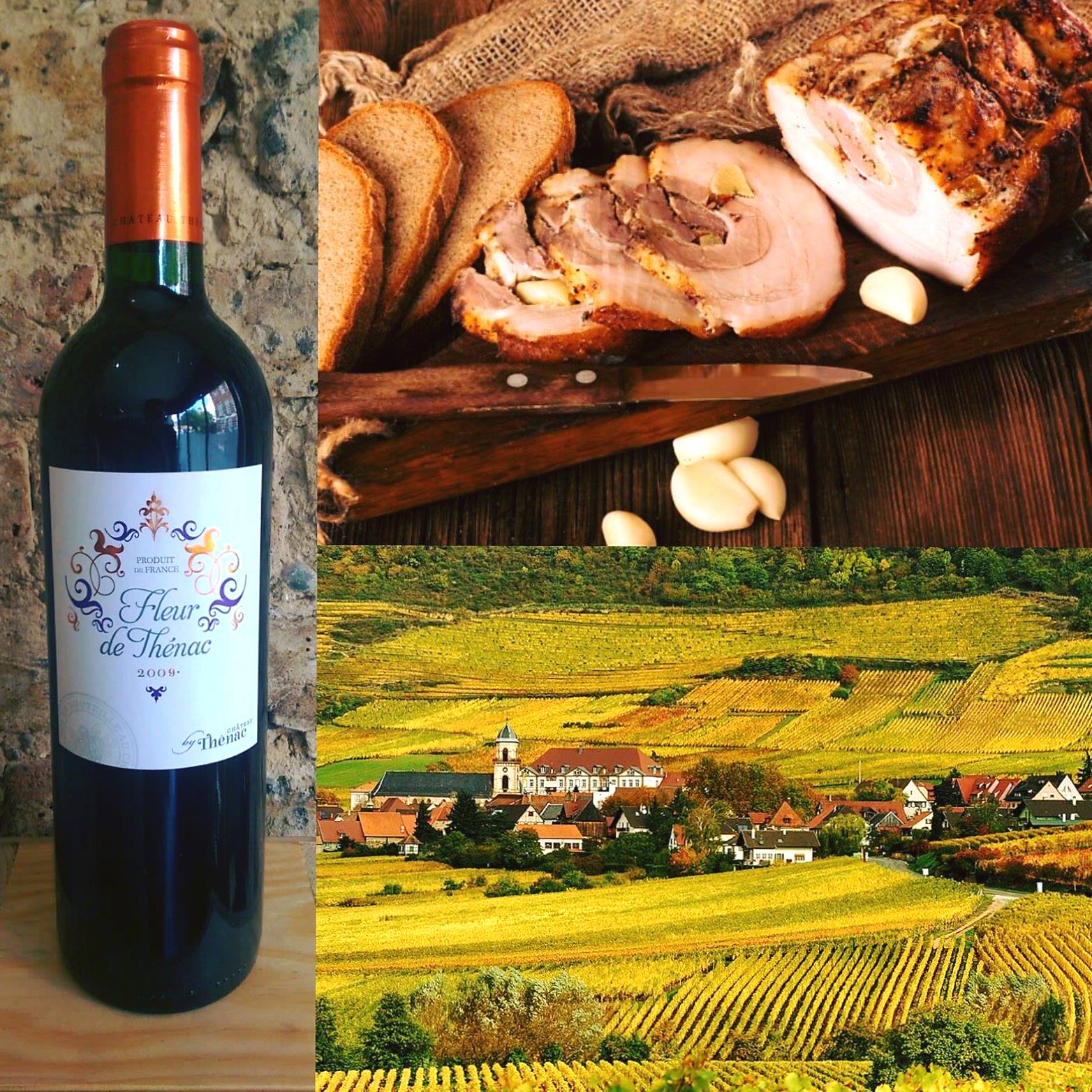
An harmonious blend of 75% Merlot, 15% Cabernet Franc and 10% Cabernet Sauvignon grown on limestone and clay, this is packed with ripe plum characters. Very much a food wine, the tannins are still pretty firm but are integrated, balanced and don’t detract from the wine’s overarching freshness.
Try it with a local recipe from the Bergerac area - ENCHAUD DE PORC A LA PERIGOURDINE
You can find the full recipe online at http://www.grandcruco.com/…/fleur-de-thenac,-cotes-de-berge…
Pop in for a visit in our beautiful shop ! You can try this and 40 other wines for FREE ! Our prices start from as little as £8.60.
You always get a 15% discount and free delivery (within 5 miles) when you purchase a 12 bottles case.
Cheers !
- Details
- Written by Henry Conway
- Category: News
- Hits: 1973
A brief look at the past week in wine...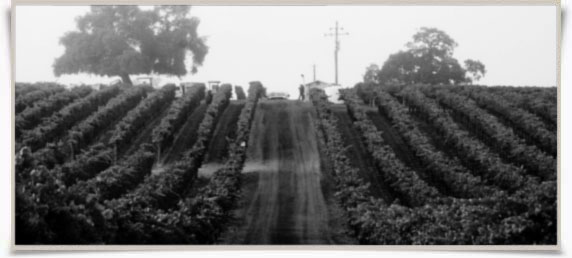
Chile fires: 100-year-old vines lost in ‘national catastrophe’
The viticultural fallout of the forest fires still raging in Chile has begun to emerge, with century-old vineyards burnt to cinders and small producers worst affected.
So far, more than 100 vineyards in Maule have been reportedly damaged by fires and approximately five hectares of vineyards have been destroyed in Colchagua as the fires continue to spread. The government has declared a state of emergency in some central regions. Many dry-farmed vineyards and adobe wineries in Maule’s ‘secano interior’ have been caught in a path of destruction as surrounding forests burn.
Cancha Alegre winemaker Sergio Amigo Quevedo lost six hectares of 120-year-old vines at the weekend. ‘It is hard to believe that those vines, which you have taken care of with such love and sacrifice, are lost, along with part of the viticultural patrimony of Chile, because of a voracious fire caused by careless men. It is a tremendous pain to lose these ancient vines that we bought in 2008 to preserve them from turning into a forest.’
The fires have been particularly ferocious in Maule. where controversial government-backed forestation plans have resulted in dense plantations of highly-flammable eucalyptus and pine trees. Firefighters reported temperatures reaching over 100°C and many neighbouring homes were without power because cables melted.
Diego Morales, of Bisogno Wines, lost his 25 hectare vineyard with 150-year-old Pais vines, which was surrounded by forests.
He said ‘By Saturday morning we could see that it was imminent… We made fire blocks, but nothing was enough. Our priority was saving the house.’ Morales and his family fought the fire themselves, suffering burns while throwing buckets of water at the fire approaching from all directions.
‘The firefighters were so overloaded that they arrived five hours after the fire had passed… These aren’t just forest fires, Cauquenes is a rural area where people live among forests, animals and vineyards. What burnt here was a cultural patrimony of more than 200 years. The authorities always minimise [these problems] and don’t react on time… I hope we can value our history and culture before this type of event happens again.’
After several weeks of uncontrollable fires in Chile’s Central Valley, President Bachelet declared a state of catastrophe on 20 January, calling it ‘the worst forestry disaster in our history’. Peru, Mexico and Spain have sent have sent aid to combat the wild fires currently threatening 450,000 hectares of agricultural land between Colchagua and Maule.
Producers of banned ‘blue wine’ appeal for law change
The company’s original marketing suggests that it was aware of a potential backlash, describing its brightly coloured liquid as ‘revolutionising the world of wine with a blasphemous drink’.
Gïk Blue includes red and white wine grapes from Spain’s Castilla La Mancha and Rioja regions, and the company infuses these with a plant-based dye plus sweeteners.
The company launched an online petition in the UK via Change.org in order to create a new product category for blue wine.
However, only 39 people had signed by midday on Monday 23 January.
‘In order to continue selling, we have been forced to stop labelling Gïk as a wine. Instead, we had to label it as a category named “Other alcoholic drinks”,’ the petition says.
Pre-orders begin for second vintage of Queen’s English wine
The 2013 vintage was sold only as a three bottle set, costing £75, and released in time for Christmas. It quickly sold out, according to merchants.
The Windsor Vineyard 2014 vintage is due to be released this autumn, at £35 for an individual bottle, and can already be pre-ordered.
Fewer than 2,000 bottles were available for the first vintage, but volumes have not been confirmed for 2014.
The fast sales of the 2013 vintage echo strong momentum for English sparkling wine as a whole over the Christmas and New Year period.
The sparkling wine is made from the traditional Champagne varieties – Chardonnay, Pinot Noir, Pinot Meunier – which were grown on the Windsor Great Park estate.
The wine was then made at Ridgeview, in Sussex, and is managed by Laithwaite’s Wine.
Laithwaite’s was given permission in 2011, by The Crown Estate and Royal Farms, to plant a vineyard in Windsor Great Park, reviving an almost 1000 year tradition of grape growing there, Laithwaite’s revealed.
Prince Charles is the head of the Great Park estate and has been very involved with the project, according to Laithwaite’s.
David Thatcher, CEO of Laithwaite’s Wine said, ‘We are delighted to be working with the vineyard to revive their once great tradition, and are equally pleased that it has proved so popular amongst our customers. We look forward to releasing the second vintage later this year.’
The Queen has previously served Ridgeview wines at state occasions, including at the banquet dinner for Xi Jinping at Bunckingham Palace, and to US President Barack Obama in 2011.
Ridgeview was also named as the official wine of Downing Street in 2016.
Angry French winemakers attack Spanish lorries, block depot
Sixty protesters block supermarket-owned depot near Nîmes. They then attacked a tanker suspected of carrying Spanish wine
Protesters claiming allegiance to militant group CRAV – or CAV – dump Spanish wine in shopping centre car park. Several protests took place in France’s Languedoc-Roussillon region on Tuesday (17 January) against cheap Spanish wine imports.
At around 6:30 am, 60 winegrowers blocked the entrance to Prodis, the wine subsidiary of the Carrefour supermarket group, in Grizan near Nîmes. The site is known to be used for producing bag-in-box wines.
Some protesters then went to the motorway toll of Gallargues-le-Monteux, 25 km from Nîmes, to find lorries containing Spanish wine.
A single lorry was found and its contents dumped on the highway. They were protesting against ‘unfair competition’, according to Anaïs Amalric, co-president of Jeunes Agriculteurs du Gard.‘These Spanish imports prevent us from selling our French products,’ Amalric said. 'Our tanks are full, prices are falling and wine merchants are asking us to lower prices. This is unacceptable,’ she said.
In parallel, further south in Narbonne, militant winemaker group CAV has claimed responsibility for 10 winegrowers dumping nearly 25,000 litres of Spanish wine from another lorry in a shopping centre car park. The letters ‘CAV’ were found in the car park and on the truck, according to Agence France Presse. Also known as CRAV, the group has intermittently attacked foreign wine installations in Languedoc for several decades.
Tensions are rising in the vineyard and protests are multiplying, as the region gears up to host the Vinisud trade show.‘We have not planned any actions for Vinisud,’ Amalric said.
‘Not for the moment. But we know that some independent winegrowers [selling bottles, not bulk wine] also want to take action and join us in this battle against unfair competition. ’Last year, several wine industry leaders in Languedoc sounded the alarm over cheap Spanish imports. Some producers also hijacked lorries and attacked depots, but local unions officially condemned the violence.
Critics have said that French winemakers must accept competition from other EU member states. But some Languedoc winemakers claim that fewer taxes in Spain make competition unfair.
- Details
- Written by Henry Conway
- Category: News
- Hits: 1842
Although wine remains our specialty, here at Grand Cru we are fans of all great quality drinks !
That's why, by securing few parcels of great beer from Elephant School Brewing, a vibrant Brewery based in Essex, we made our very first step into the exciting world of craft beers.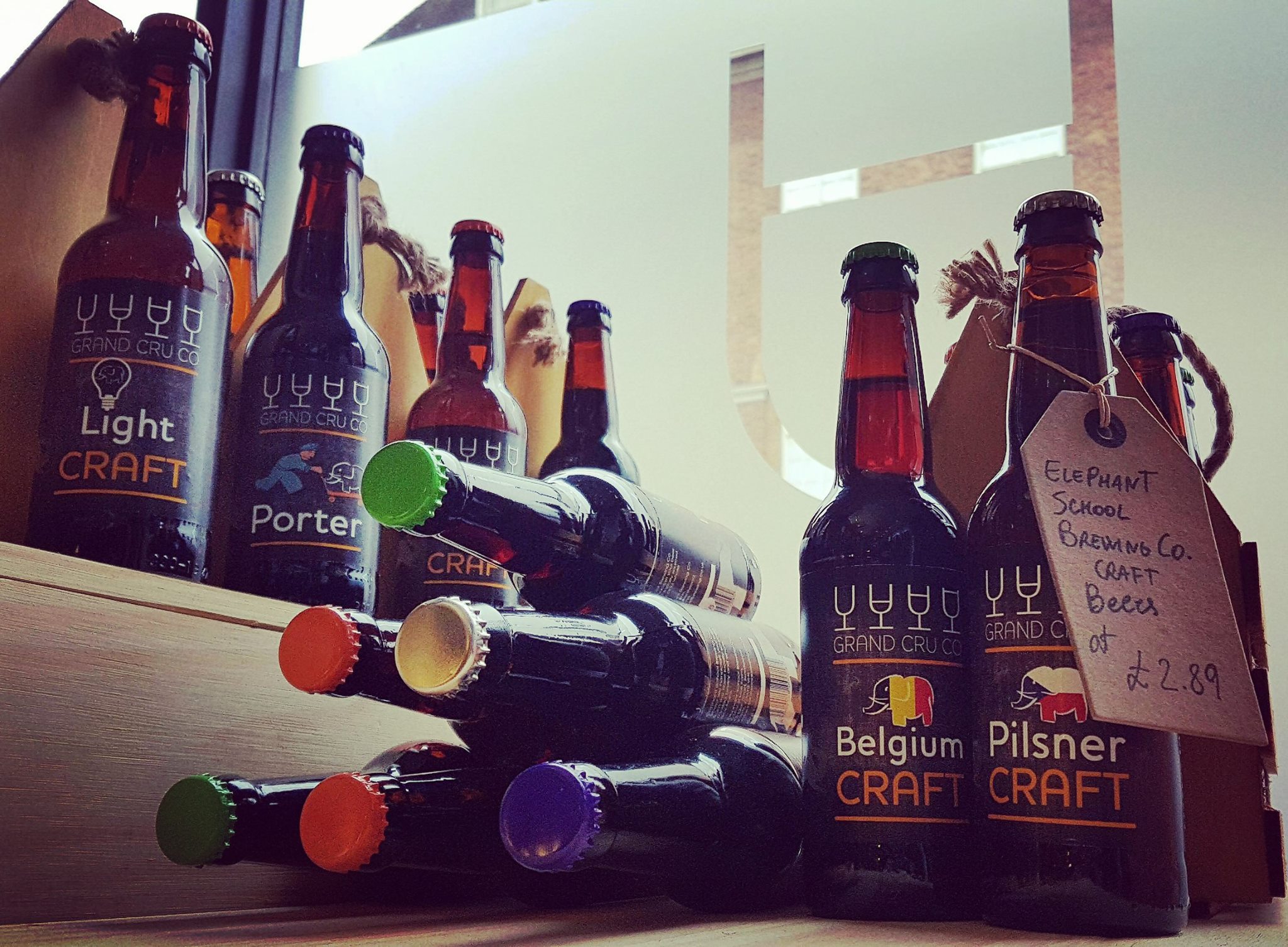
http://elephantschoolbrewing.com/
From the moment we first tried them, we just fell in love ! Refreshing and easy to drink, yet complex and intriguing, these beers are far away from the usual (and boring!) industrial products you can find everywhere.
Let us introduce you to these brewing wonders !
Pilsner Craft > For the more traditional ‘lager’ lovers the Pilsner craft is a bright and refreshing one.This beer is crushable, always begging for another sip and pairs well with sushi, outdoor grilling, spicy Thai and Mexican dishes.
Light Craft > With its burst of passion fruit and hint of mint, Sombrero starts a fiesta in your mouth that you won’t want to stop. Tipping its wide brimmed hat to its European saison roots, its flavour transports you to Mexico for a party that lasts to the bottom of your glass.
Belgium Craft > A glorious embellishment of flavours brought together in this collaboration of styles from Belgium and Great Britain. The honeyed sweetness of the figs wrapped around the spicy, piney tang of the rosemary combine perfectly with the eccentricities of the Belgian yeast.
Porter > For a taste that will have you singing in the rain, this rich porter showers your tastebuds with waves of chocolate…fruity and bitter with successive sips. Porter in a Storm is one to pour down your throat if you’re caught in a downpour or any time you want a great beer.
Come and try them ! They are only £2.89 each … and as INTRODUCTORY OFFER, when you buy a 12btls case, you get a rather tasty 20% discount !
Cheers !
- Details
- Written by Henry Conway
- Category: News
- Hits: 1646
The history of Chateau Carbonnieux goes back a very long way, and records show that wine was made there at least as early as the 12th century. Benedictine monks from Sainte-Croix abbey in Bordeaux replanted and renovated the estate in the 18th century. They took advantage of the exceptionally pale, clear colour of the white wine to label it as "Carbonnieux mineral water", which they then proceeded to ship to the Sultan of Turkey! Marc Perrin acquired and restored the château in 1956. His son, Antony, currently manages the estate.
The gravelly soil at Carbonnieux is perfectly drained thanks to the Eau Blanche stream that carries away any excess water. The 85 hectares of vines are evenly divided between red and white wine varieties. The white wine is fermented and aged in barrel for 10 months. The red wine is aged for 15 to 18 months in barrel, depending on the quality and characteristics of the vintage.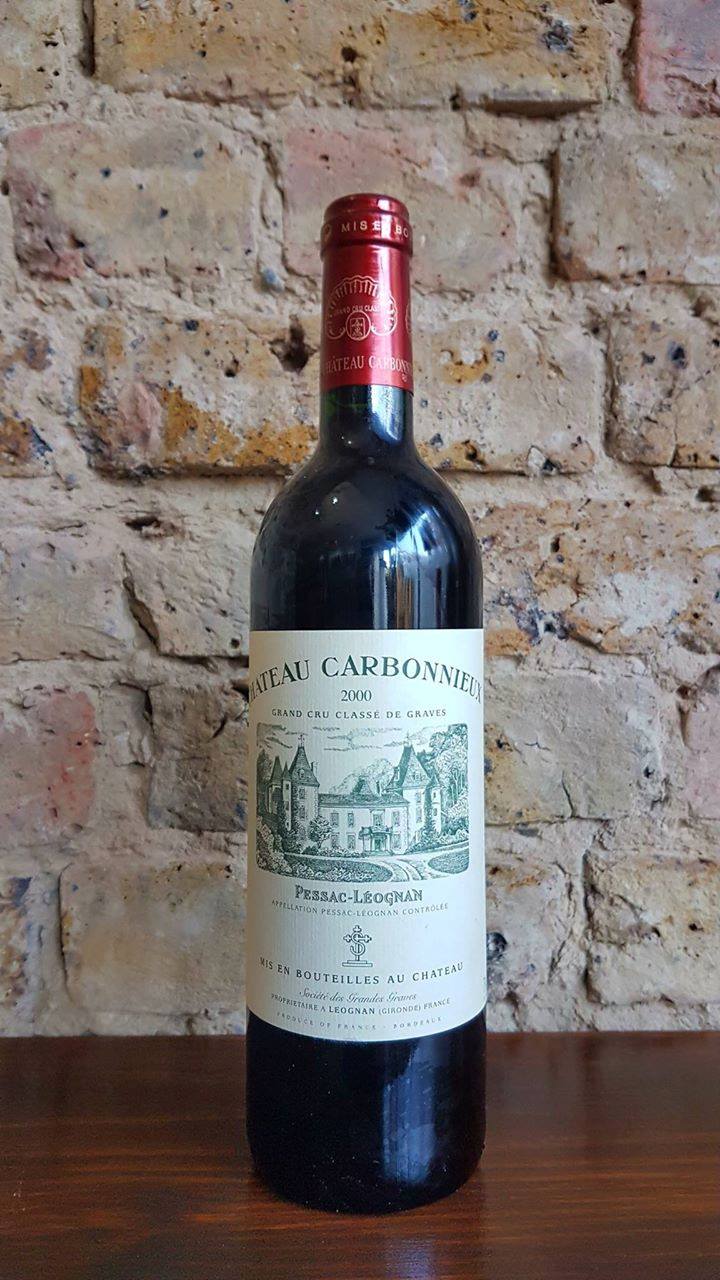
Mr. Robert Parker said "probably the finest Carbonnieux I have tasted in over three decades, this deep ruby/purple-coloured offering reveals complex aromas of black cherries, currants, tobacco, soy, and earth. Medium-bodied, with gorgeous purity, more glycerin and depth than usual, and subtle toasty oak in the background, this is a beautiful example of refinement and breeding."
Try it with CLASSIC ENTRECOTE A LA BORDELAISE
You can find the full recipe online at http://www.grandcruco.com/…/chateau-carbonnieux-grand-cru-c…
Pop in for a visit in our beautiful shop ! You can try this and 40 other wines for FREE ! Our prices start from as little as £8.60.
You always get a 15% discount and free delivery (within 5 miles) when you purchase a 12 bottles case.
Cheers !
- Details
- Written by Henry Conway
- Category: News
- Hits: 1696
What a day to be alive! Grand Cru Co have been featured in the Evening Standard!
Click the link so go and have a read about how we got started and a whole host of other information about the shop and it's owner!
http://www.standard.co.uk/…/entrepreneurs-the-founder-of-wi…
